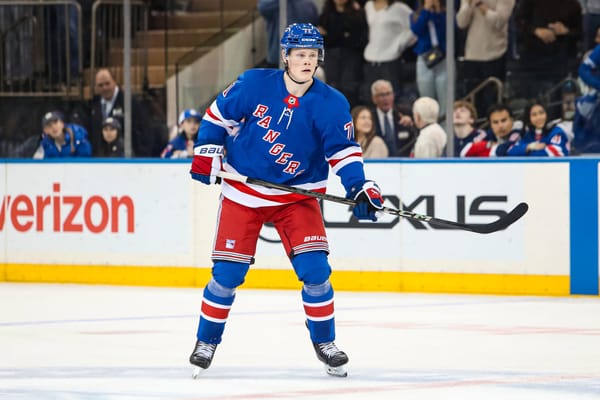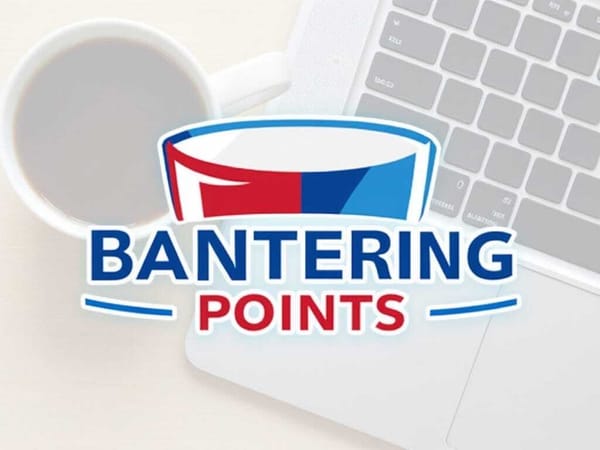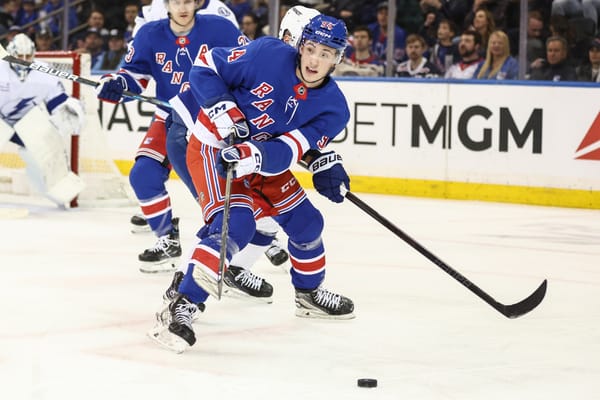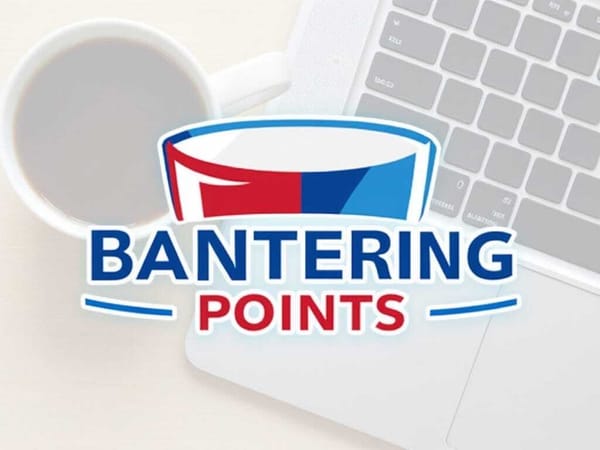Blueshirt Banter 2020 New York Rangers Prospect Rankings: 30-26
It’s an all-European start to this year’s prospect rankings.
30. Leevi Aaltonen, Left Wing, KalPa
2019 Ranking: 26
Age: 19
Acquired Via: 2019 Draft (Fifth Round)
I liked the Rangers’ selection of Aaltonen at the time of the 2019 Draft, but last season was brutal. He averaged under ten minutes in 45 games for KalPa of the Finnish Liiga and registered just one goal and six assists. He was generally overwhelmed against the level of competition and did not make Finland’s World Junior Championship team.
The 2020-21 season hasn’t been much better. Aaltonen is again struggling to earn ice time for KalPa, typically earning in the range of eight-to-ten minutes on KalPa’s fourth line. Recently, KalPa loaned him to the Mestis, which is Finland’s second tier. He’s yet again on the outside looking in for Finland’s World Junior roster, and missing the cut at nearly 20 years old would be a devastating critique of his development by Finland Hockey.
At his best, Aaltonen can be an exciting player. He is an A-level skater with creative streaks. One decent sign is that, even in limited ice time, he is getting a fair number of shots on goal. Despite averaging under eight minutes this season, Aaltonen has registered at least two shots on goal in five of ten games and three-plus in three games.
An NHL scout mentioned to me recently that his team, and really, the league at large, is starting to prioritize drafting European-based and NCAA-bound players in the later rounds because teams will hold their signing rights for four years, as opposed to two years for CHL players. It provides a longer runway for players to prove themselves before a decision has to be made. Aaltonen is a Rangers’ prospect until June of 2023, so he has time to turn this around, but his development so far has stagnated.
29. Hugo Ollas, Goaltender, Linköping J20
2019 Ranking: N/A
Age: 18
Acquired Via: 2020 Draft (Seventh Round)
When the Rangers drafted Ollas, my information on him was limited. Since then, I haven’t been able to find out too much more. Maybe most crucially, I’ve seen very limited amounts of video on him. He has a .906 save percentage in nine J20 (Swedish juniors) games, which is okay but not great. However, his performances were improving before the J20 season was postponed until at least January due to COVID-19 concerns.
Someone I spoke to who has seen him and knows goaltending well voiced major concerns about his makeup. It seems that size (he’s 6’8) has gone a long way in compensating for major weaknesses in his game. His movements are clumsy and his skating lacks technical ability. If he does not greatly improve in those areas, it will be impossible to imagine him as a capable professional goaltender in North America, NHL or otherwise.
The good news is that the Rangers can sit on him for four years before his rights expire. That gives them a long time to work with Ollas in Europe away from the organization, where any struggles won’t be at the expense of organizational success. Goalies frequently have weird developmental timelines, and especially so for bigger ones who have to work on movement. To call Ollas a project would be an underselling of his situation.
28. Calle Själin, Left Defense, Leksands IF
2019 Ranking: 26
Age: 21
Acquired Via: 2017 Draft (Fifth Round)
The 2019-2020 season was Själin’s healthiest season as a Rangers’ prospect. After two straight seasons in which injuries forced him to miss significant time, he played a total of 36 league games between Leksands of the Swedish Hockey League and Vasteras of the Allsvenskan (tier two).
The bad news is that he did still miss some time and that he struggled to establish himself full-time on Leksands’ roster. He was often used as the team’s seventh defenseman (SHL teams have expanded lineups). His ice time was rare and, when he did get shifts, he struggled. That explains the eventual loan to a lower league, where he wasn’t exactly spectacular, either.
This is our first instance where the warped hockey timeline complicates matters. Själin is back with Leksands in the SHL for the 2020-21 season and through 16 games he has played pretty well. He started off in a third-pair role and has slowly earned increased responsibilities for Leksands. He’s driving play for his team.
The good news for Själin’s prospect stock is that, despite how long he’s been in the Rangers’ system, he only just turned 21 years old on September 7th. In an alternate universe where he was born a few weeks later and played in college hockey, we might be talking about how he was about to start his junior season and still had plenty of development left. Especially if he stays healthy, it’s not completely out of the question that Själin could prove NHL-ready by the time he is 23 or 24.
The problem for the Rangers is that they lose their exclusive rights to him on June 1st of next year. If he is to earn an NHL contract before then, he has a lot of ground to make up in a short amount of time.
On talent alone, Själin would be pushing the top-20 on this list. If these rankings were made three months ago, he would not have made the list at all. There are far worse prospects to have than a 21-year-old possession-driver earning consistent minutes for a decent SHL team, but he hasn’t stood out in a meaningful way yet and it’s more than fair to wonder how he could hold up in North America, where play is more physical and there’s less space on the ice. Själin will need to really make a statement in the next five months if the Rangers are going to give him an NHL contract in June.
27. Libor Hájek, Left Defense, Hartford Wolf Pack
2019 Ranking: 12
Age: 22
Acquired Via: Trade (2018)
As much as Hájek struggled in Hartford in 2018-19, there was plenty of plausible deniability. The team on the whole was a sinking ship and, in a five-game cameo at the NHL level, he played very well.
It’s hard to find credible points of optimism from his 2019-20 showing. He made the roster out of training camp but, in 28 games, rarely put in a strong performance. He registered zero goals and five assists, which in itself isn’t the end of the world as he’s defensive-minded. However, his defensive outputs were disastrous.
That’s a high volume of shots in dangerous areas of the ice (via Hockey Viz). The estimate here is that last season Hájek gave up 17.5% more expected goals than the rest of the team; an absolutely insane number. As the chart shows, teams had their way right in front of the net when Hájek was on the ice.
Per Evolving Hockey, the Rangers were expected to be outscored 3.37 to 2.11 with Hájek on the ice at five-on-five. That rate was third-worst among all NHL defensemen (minimum 200 minutes) last season.
The most common defense I’ve seen of Hájek as a prospect is that he’s still “young.” Based on the current understanding of NHL aging curves, 22 is just about the start of a player’s prime, and while there’s room to improve into the mid-20s, Hájek has a lot of ground to make up to become even a decent NHL depth defenseman.
To see if there was a valid argument to make about Hájek’s room for improvement, I wanted to compare his 2019-20 season, in which he posted -4.4 Goals Above Replacement, to other 21-year-old defensemen of the past to see long-term the success rate.
This proved to be an impossible task. On the advice of Evolving Hockey, I sorted for a range of 21-year-old defensemen who played between 400 and 700 minutes (Hájek played 447) from 2008 through 2017. Over those 10 seasons, only two defensemen posted worse than -1.9 Goals Above Replacement. Tyson Barrie at -3.2 in nearly 700 minutes and Matt Lashoff at -3.7 in 495 minutes.
Hájek wasn’t just bad last season. He was bad at a virtually unprecedented level. Lots of 21-year-old defensemen have had their share of struggles trying to bake a cake, but Hájek set the kitchen on fire.
Am I giving him a zero-percent chance of turning into an NHL defenseman? No. But there’s really not a good argument to make in his favor. I ranked him 12th last season, and if I’m being honest, my fear of outside perception probably led to my ranking him higher than I really wanted to. I’m sure Hájek is a nice guy who is trying his best but I’m just not a believer in his game. If he proves me wrong then good for him and the Rangers, and at least I’ll be wrong on my own terms.
26. Adam Edström, Wing, Rögle BK
2019 Ranking: 22
Age: 20
Acquired Via: 2019 Draft (Sixth Round)
I feel comfortable with where I rank Edström and I don’t think you’d find anyone who would disagree with it dramatically in either direction. I do have a hard time figuring out what to make of him, though. The 6’6 forward has a pretty mature game. His skating is good enough for the Swedish Hockey League, though I think he’ll need to make improvements if and when he comes to North America. He’s incredibly strong and plays an exceptionally physical game for the SHL. He recently was suspended five games for a bad hit. Near the net he has pretty good hands and will score his share of goals. He spent most of last season as Rögle’s 12th or 13th forward. This season he’s mainly featured on the fourth line, though in recent games his ice time has increased.
Aside from improvements to be made in skating, he isn’t a skilled puck carrier. He’s not going to beat a forecheck nor made creative passes. His game is narrow and the most optimistic view of his upside may be as a decent third-line forward, but those limits are oddly assuring, in a way. He knows exactly what his strengths are and he doesn’t try to play above his means. Having just turned 20, a fourth-line role for one of Sweden’s top teams is a stable situation for now. In the subsequent two seasons, Edström will need to improve his role on the team. His theoretical path to the NHL is as a checking depth forward and it will come down to whether he can fine-tune his game enough to satisfy the requirements for that role at a higher level. If he does, the Rangers won’t hesitate to sign him and make Hartford the next step in his developmental journey.




